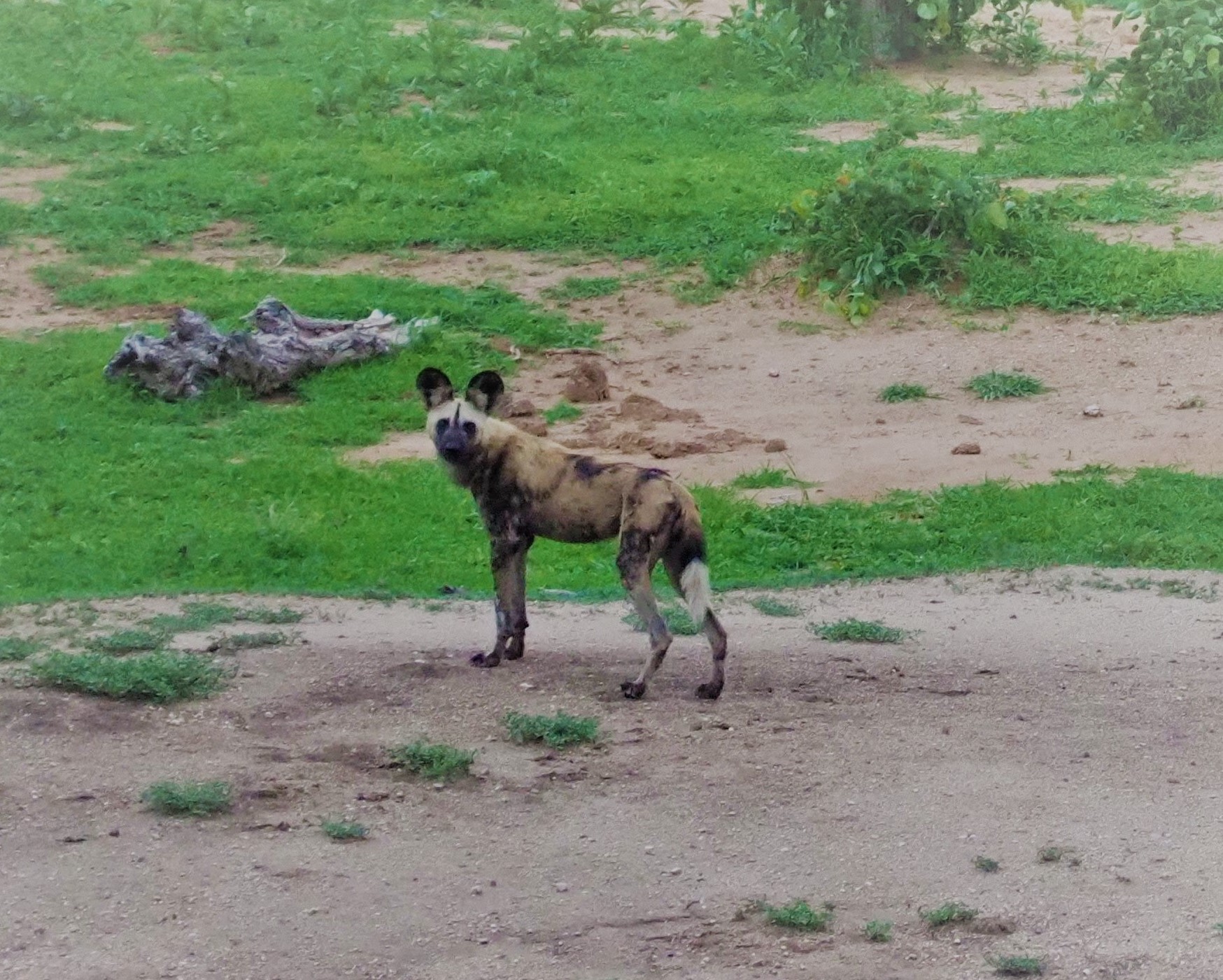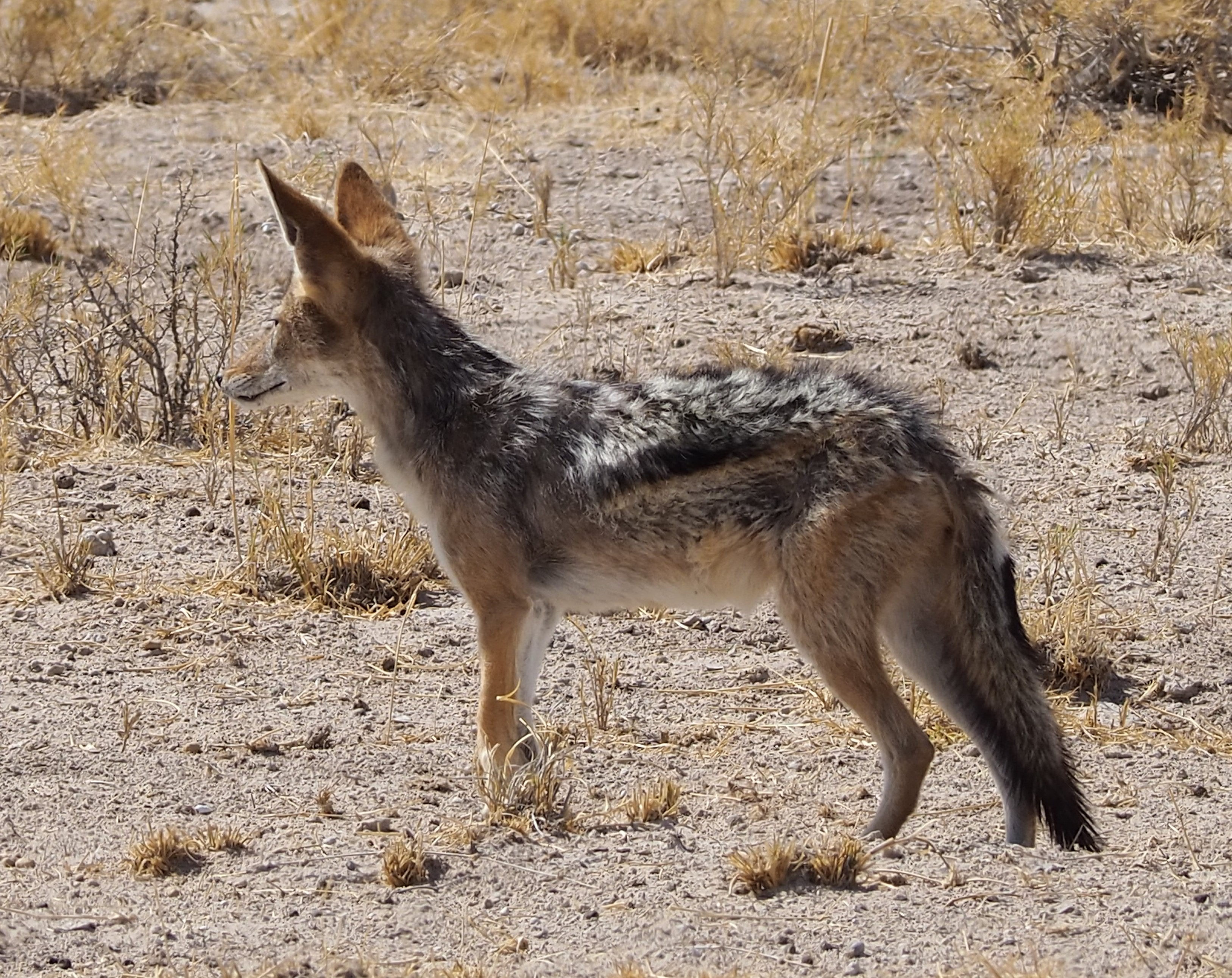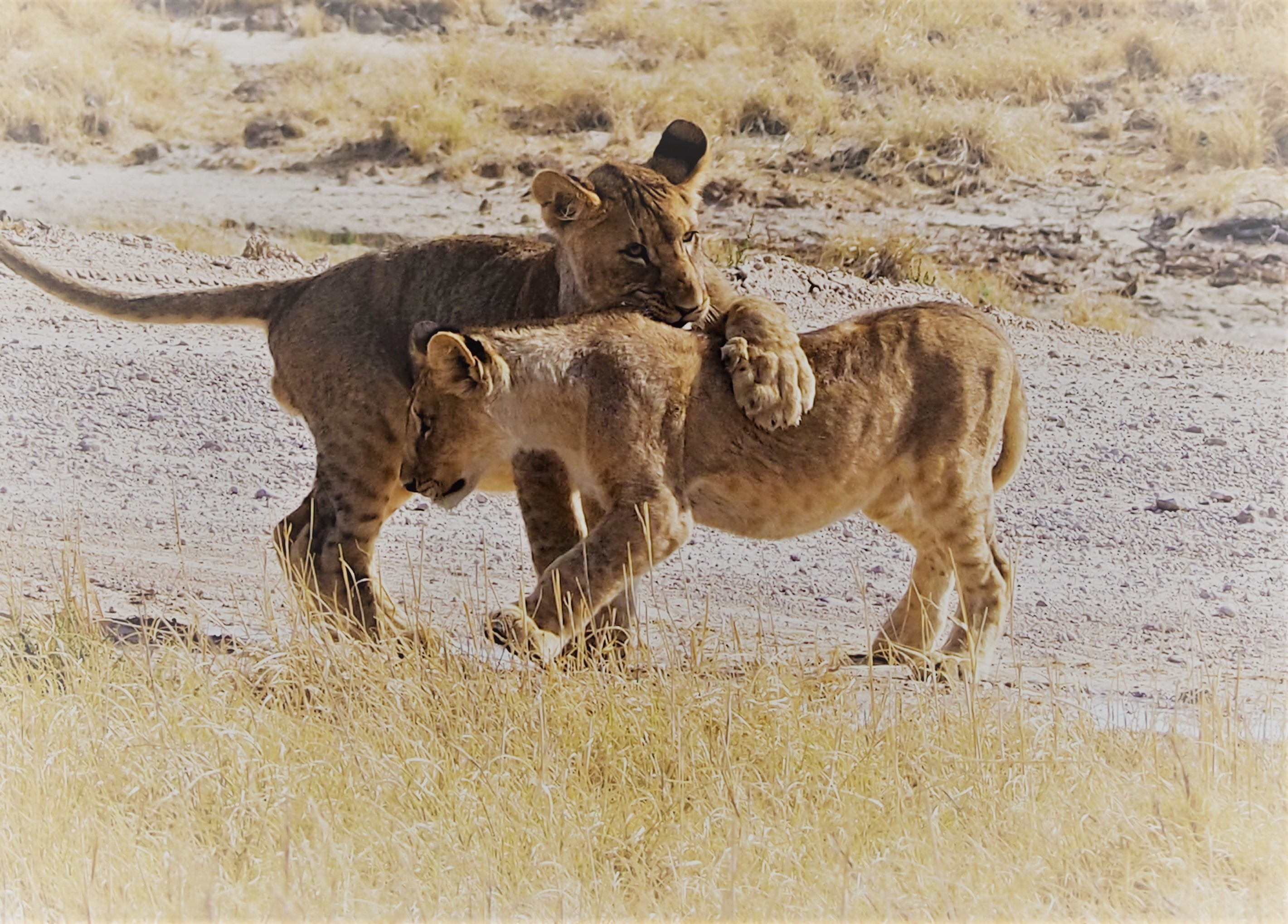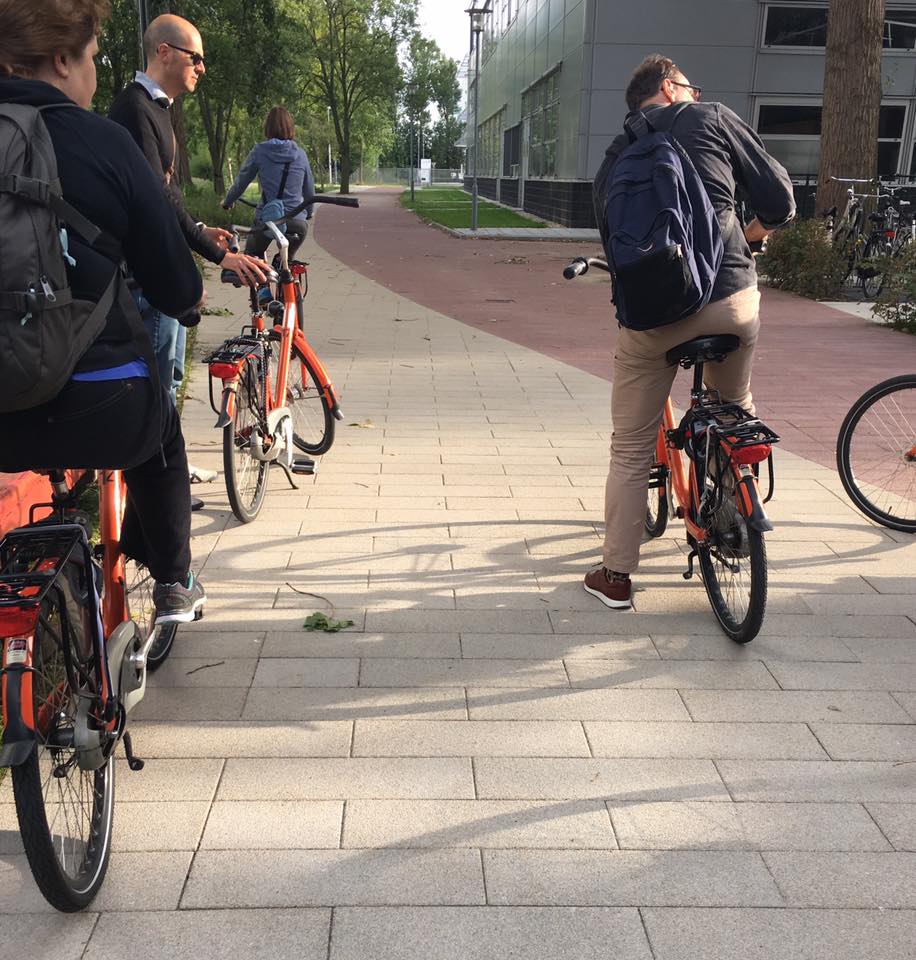Jennifer was invited to participate in a panel on Career Routes in Movement Ecology: The Academic World and Beyond at the Gordon Research Seminar at the Renaissance Tuscany Il Ciocco in Lucca (Barga), Italy. The seminar was held in conjunction with the conference on “Animal Movement as a Link Between Ecology, Evolution and Behavior.”
Author: Jennifer Miller
Book chapter on Tapir movement
Jennifer and 2 of her former and current doctoral students (Cody Schank and Brendan Hoover, respectively) published a chapter on the impact of Hurricane Otto on Baird’s Tapir movement in Nicaragua in Movemen t Ecology of Neotropical Forest Mammals
t Ecology of Neotropical Forest Mammals
Namibia/Botswana/Zimbabwe
Jennifer spent several weeks in Namibia, Botswana, and Zimbabwe over the winter break. Part of this was related to a new project studying interactions between jackals in Etosha National Park.




New paper on Science of Movement in IJGIS
Jennifer was a co-author on a new foresight paper with Harvey Miller, Somayeh Dodge, and Gil Bohrer: ‘Towards an integrated science of movement: converging research on animal movement ecology and human mobility science.” This paper was a result of two NSF-funded workshops on movement analysis in Nov. 2016 (UT-Austin) and May 2017 (OSU).
Jennifer invited to give seminar at University of Amsterdam
I was invited to give a seminar at the Institute of Biodiversity and Ecosystem Dynamics (IBED) at the University of Amsterdam. The visit coincided with King’s Day, a national holiday to celebrate the King’s birthday.
Special Issue on Spatial Ecology in IJGIS
CFP for the 5th special issue on Spatial Ecology in International Journal of Geographical Information Science is announced.
Special Issue Editors:
Assoc Prof Jennifer Miller, University of Texas at Austin, USA;
Assoc Prof Shawn Laffan, University of NSW, Australia;
Prof Andrew Skidmore, ITC, University of Twente, The Netherlands;
Prof Janet Franklin, University of California-Riverside, USA
A 5th special issue on spatial ecology has been approved by the Editors and Publisher of the International Journal of GIS. You are encouraged to submit relevant and high quality manuscripts for this special issue (see details below). This special issue continues the tradition of Spatial Ecology publications in the IJGIS.
For this special issue, we are seeking the submission of papers from ecological and related environmental studies, as well as more technical articles including topics such as spatial data infrastructure relevant to ecological applications. We are especially interested in special and novel ways of addressing spatial ecology questions, managing spatial ecological data, and advancing open science in spatial ecology.
Key words and topics for this special issue include scale, geovisualization, spatial data infrastructure for ecological (biodiversity) data, methods to derive ancillary data required for ecological modeling (climate, terrain, soils etc), animal movement including both spatial and temporal analysis, phenology, global databases for ecological studies (biodiversity, NPP, carbon etc), fragmentation and connectivity, biodiversity hotspots and endemism, physical vegetation structure for biomass assessment, palaeoecology and reconstructing past environments with respect to climate change, innovative methods and models for spatial ecological analysis, and open science and new directions for spatial ecology research. Applications across terrestrial, marine and atmospheric ecology are welcome. Relevant cross-over papers between GIS and remote sensing will also be considered.
The deadline for submission of papers is 15-July-2018. The anticipated publication date will be in 2019.
Papers are to be submitted via http://mc.manuscriptcentral.com/ijgis. Please choose ‘Special Issue Paper’ from the Manuscript Types field when doing so.
PhD student Cody Schank lead author in Diversity & Distributions paper
Cody Schank (PhD expected 2018) is the lead author of a collaborative paper that compares different statistical methods to model the potential distribution of Baird’s Tapir. The abstract is below and the article can be found here:
Aim
We test a new species distribution modelling (SDM) framework, while comparing results to more common distribution modelling techniques. This framework allows for the combination of presence-only (PO) and presence-absence (PA) data and accounts for imperfect detection and spatial bias in presence data. The new framework tested here is based on a Poisson point process model, which allows for predictions of population size. We compared these estimates to those provided by experts on the species.
Species and Location
Presence data on Baird’s tapir (Tapirus bairdii) throughout its range from southern México to northern Colombia were used in this research, primarily from the years 2000 to 2016.
Methods
Four SDM frameworks are compared as follows: (1) Maxent, (2) a presence-only (PO) SDM based on a Poisson point process model (PPM), (3) a presence-absence (PA) SDM also based on a PPM and (4) an Integrated framework which combines the previous two models. Model averaging was used to produce a single set of coefficient estimates and predictive maps for each model framework. A hotspot analysis (Gi*) was used to identify habitat cores from the predicted intensity of the Integrated model framework.
Results
Important variables to model the distribution of Baird’s tapir included land cover, human pressure and topography. Accounting for spatial bias in the presence data affected which variables were important in the model. Maxent and the Integrated model produced predictive maps with similar patterns and were considered to be more in agreement with expert knowledge compared to the PO and PA models.
Main conclusions
Total abundance as predicted by the model was higher than expert opinion on the species, but local density estimates from our model were similar to available independent assessments. We suggest that these results warrant further validation and testing through collection of independent test data, development of more precise predictor layers and improvements to the model framework.
Jennifer presents research at Geocomputation conference
Jennifer presented her work on “A computational movement analysis approach for modelling interactions between pairs of moving objects” at the 2017 Geocomputation conference in Leeds, UK. Paul Holloway (UT PhD ’16) also presented his work on “Individual-based modelling of species’ dynamic resource use.”
 |
UT PhD (’16) Paul Holloway starts position at Cork
Jennifer’s first PhD student, Paul Holloway, started his new position as a lecturer in the Geography department at University College Cork. Paul’s dissertation focused on incorporating movement in species distribution models and he had a post-doc in the Computer Science department at York University for a year immediately following his graduation.
Jennifer participates in Leiden workshop
Jennifer was back in Europe for a Leiden workshop on Movement: New Sensors, New Data, New Challenges. Lorentz Center (Leiden, The Netherlands), August 21-25, 2017. Jennifer gave a keynote lecture on “Advances & Issues in Spatial Ecology (with applications & implications for Movement pattern analysis and computational movement analysis)”.
We all rented bikes and were able to bike to and from the workshop and to downtown Leiden. The end-of-workshop dinner was on the beach in Katwijk.

